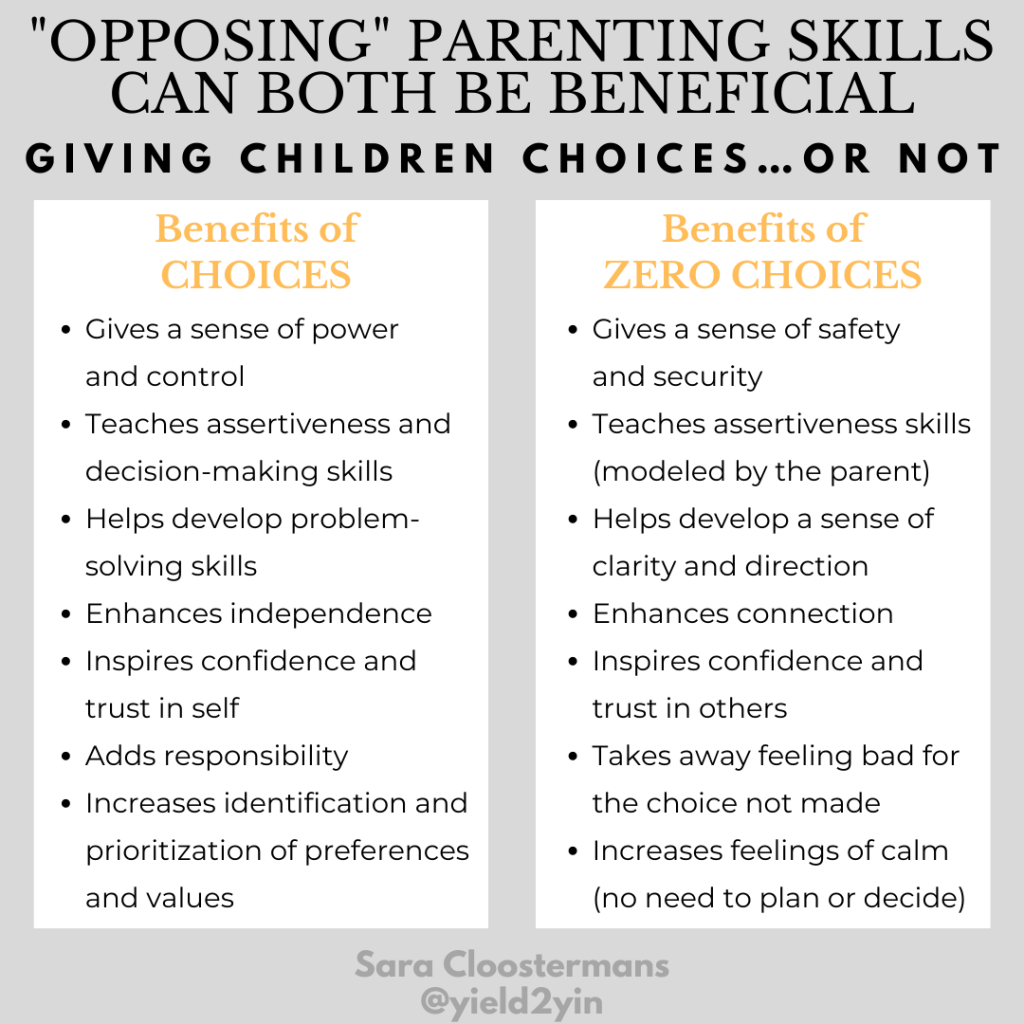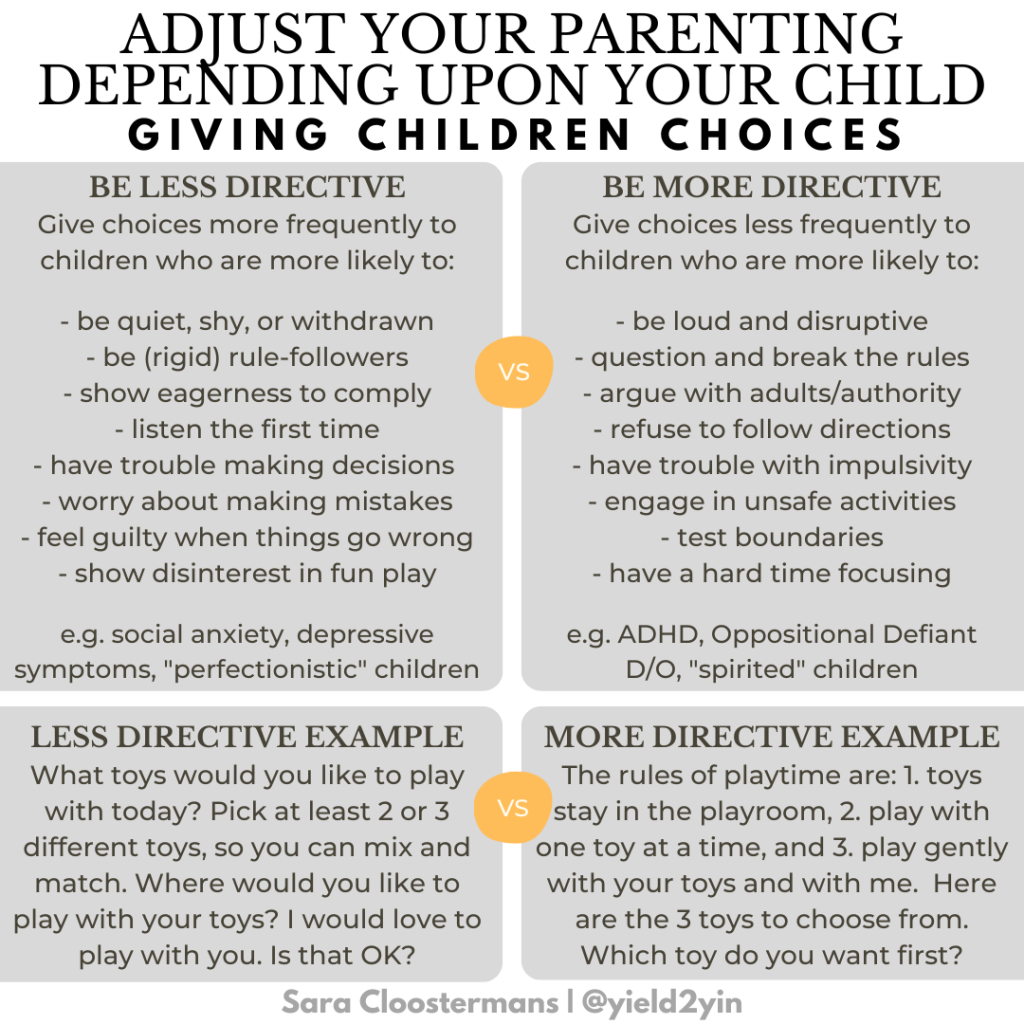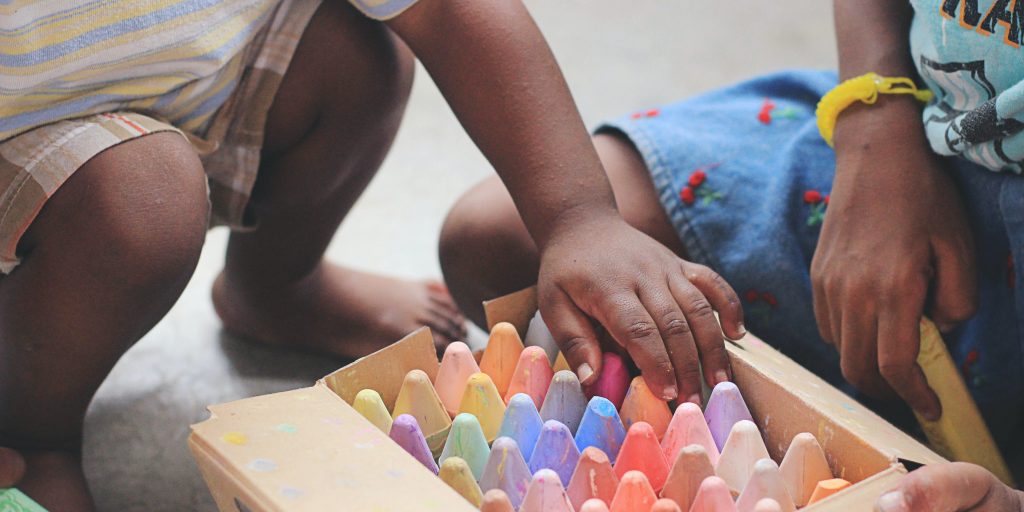A few weeks ago, I created a list of 7 Positive Parenting Skills and followed that up with 6 More Positive Parenting Skills… I’m back with another! In this skill, like the others, both parent and child are viewed as holistic beings – with valued and respected minds, bodies, and spirits.
Also like the others, “Giving Choices” can be adapted for different parenting stages. A 17-month-old and a 17-year-old can both benefit.
Choices: A Positive Parenting Skill
Giving your children choices is self-explanatory: you give them different options to choose from.
Here are a couple of things to consider:
- Make sure that you limit the number of choices and adjust them according to your child’s age. The number of choices to give is somewhat arbitrary; just use your common sense. For example, a 2-year-old should only have two choices whereas a 5-year-old may have three choices, and a 16-year-old may even have more than three.
- Keep the types of choices appropriate. For example, don’t ask your child if they want a little baby sister or brother, or not. This is not a decision you hand over to a kindergartner, and quite possibly, depending on their answer, not a request you are willing to, or sometimes even can, follow through with.
There are two different types of choices.
Choices Type #1: Possibilities
The first type of choices are the ones you are probably most familiar with – giving 2 or more different possibilities. Neither one is better than the other. You, the parent, have no preference.
Examples:
- You tell your 2-year-old: “You have two choices: Would you like to have your banana all in one piece or would you like me to cut it into slices?” or “Would you like banana slices or apple slices for snack time?”
- You tell your 5-year-old: “You have three choices: Would you like to have James, Taylor, or Ryan come over for a playdate after school today?”
- You tell your 16-year-old: “You have four choices: Do you want your first used car to be a Toyota Corolla, Subaru Outback, Honda CR-V, or Kia Sportage?”
Choices Type #2: Skill-Building
The second type of choices are the ones you are probably less familiar with – giving choices that are used in a somewhat “disciplinary/skill-building” way. In this case, I suggest you, the parent, only give two choices.
Each one of the two choices is connected to a logical consequence. One choice is better than the other, at least according to you. The key is to not show any judgment if your child chooses the one that you least prefer.
Examples:
- You tell your 2-year-old: “You have two choices: you keep pouring water onto the floor or you keep the water in the tub. If you choose to pour water onto the floor even one more time, bath time ends immediately without another warning. If you choose to keep the water in the tub, you can play with your bath toys for another 10 minutes.”
- You tell your 5-year-old: “You have two choices: you keep playing roughly with Zeus (the family dog) or you play gently with Zeus. If you choose to continue playing roughly with Zeus, I am putting him in the backyard to play by himself. If you choose to play gently with Zeus, then you can continue playing with him.”
- You tell your 16-year-old: “Let me start by saying that if you end up deciding to take a ride home with one of your friends the way you did at the homecoming party, you also decide to not go to any other parties for the rest of the semester. Here are your decision making options for tonight: you either have me pick you up from the party (Yes, if you have a teenager, you know this option is the “disciplinary” one 😂), or you invite Vanessa (your daughter’s best friend) to sleep over at our place, and the two of you can take an Uber home together.”
5 Tips On Giving Your Children Skill-Building Choices
- Make sure that both your choices are still acceptable to you, so that you can 100 % follow through in case your child chooses the one that, in your opinion, is less sensible.
- Along the same line, do not give choices that are unreasonable, and you would therefore never follow through with. Your child will figure out very quickly that you give false “threats” and they will no longer take you seriously. Using the examples above, this is what an unreasonable choice could sound like:
- … or you are done with baths and moving forward, it’s showers only.
- … or I am placing the dog for adoption; I know of a nice farmer who would really enjoy Zeus’ company.
- … or you are never allowed to go to another high school party ever again.
- If your child refuses to make a choice because they don’t like either one, you have the option to add an additional choice: “If you don’t make the choice, then I will make it for you. That’s really your choice too.”
- Make sure you use the words “choice(s)” or “decision(s)” when you present your child with different options. It is crucial that you put the responsibility where it belongs: with them. I agree, when things go wrong, they will probably still try and find ways to blame you, but now you have made this more difficult for them.
- End with the choice that you would like your child to ultimately choose. The last part of a statement is usually what we all remember best, including your child. In the examples above, your child remembers “blah, blah, blah… keep water in the tub, play for 10 more minutes”, “blah, blah, blah… gentle hands, play with Zeus”, and “blah, blah, blah… Vanessa sleepover, Uber home.” But, no guarantees, of course.
The Goal of Giving Children Choices
Having choices gives your child a sense of power and control. Choices also teach your child about responsibility. When children are trusted with decision-making as well as being responsible for the decisions they make, their self-confidence increases.
As you give safe choices to your children, you also model creative ways of problem-solving, which your children will hopefully remember when they are confronted with similar situations in the future and their parents are not around to guide them.


Yield2Yin
- Healing Card Deck: A Therapist’s Advice 55-Card Healing Deck by Sara Cloostermans
- Book Recommendation: No-Drama Discipline: The Whole-Brain Way to Calm the Chaos and Nurture Your Child’s Developing Mind by Siegel and Bryson
- Mantra: I AM TRANQUILITY // repeat with diaphragmatic breathing
- Yin Yoga Asana: Child’s Pose
This page includes Amazon Associate affiliate links. This means I may earn a small commission at no cost to you if you purchase a product I suggest, and for that reason, I only recommend products I believe in. Learn more HERE.







